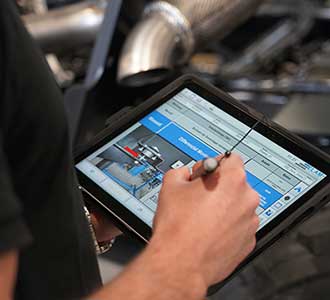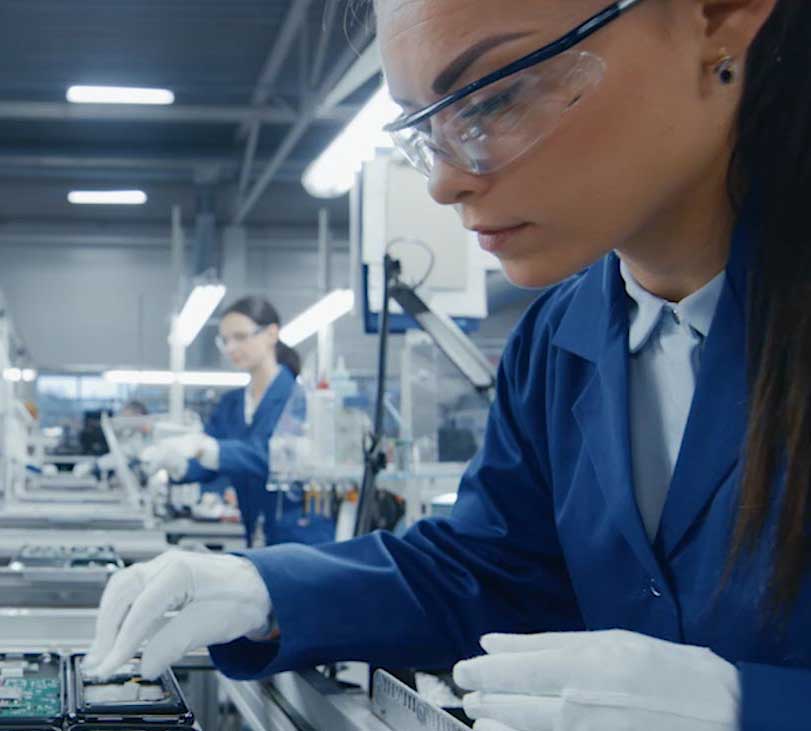It's all about maximizing productivity and minimizing risk with smarter systems and therefore securing a competitive advantage.
Fasteners hold the world together
From railroad cars to medical devices, from tractor tires to watch cases, screws, rivets, and other torque-tightened fasteners hold our world together. Fasteners are an integral component in many machines that contribute to our quality of life; thus, whether we realize it or not, we rely on proper fastening technique every day to make our lives easier and to keep us safe.
It’s easy to take fastening for granted – when it works. However, when it doesn’t work, the results are noticeable. Improper fastening can have negative consequences ranging from slight irritation and customer dissatisfaction to economic damage, injury, and loss of life.
It’s no longer enough to just put parts together properly; assembly companies must be able to prove that components have been fastened to the correct specifications to comply with regulations and to avoid liability. Smart fastening systems help to satisfy both requirements.
Manual fastening of complex assemblies is inefficient
Complex assemblies require can require hundreds of screws. In today’s manufacturing environments in which both speed and precision are paramount, manual fastening processes cannot compete with the efficiency and control offered by smart fastening systems.
When production involves multiple fasteners, especially when each screw or rivet has different requirements, it makes sense to use an integrated system. The alternative – tasking human operators with remembering each fastener’s specifications, tightening each one at a different angle or with a different degree of torque, and then manually checking and recording the results – is inefficient.
Manual fastening processes are also more error-prone than smart systems. Multiple fasteners mean multiple chances for things to go wrong. Functional or process-critical fasteners, especially, must be tightened to precise specifications in order to avoid issues down the line. Torque control is especially important; too high preload (due to a to high torque) can damage the fastener or the assembly, while underapplication of torque can cause the fastener to come loose during operation. Both misapplications can lead to safety concerns, product failure, and liability issues.
Documentation demands considerable effort
In response to this, standards like VDI/VDE 2862 are being adopted across all industries. If complaints occur or liability is claimed, companies must be able to prove that their processes meet industry standards. In the case of VDI/VDE 2862, these standards dictate minimum requirements for tightening tools and systems, as well as for fault detection; in order to prove that a particular assembly meets these standards, considerable amounts of data must be collected and stored. These documentation requirements demand significant effort and, in the case of manual data collection processes, often don’t directly generate value. Failure to meet these documentation requirements can result in organizational risk, however, which means companies must still put forth the effort.
Example – Risk of liability
Imagine a railcar producer, for example, who manually documents their fastening processes. Every week, the operator consults a checklist on which all of the high-risk joints to be worked on that week are listed. After a high-risk joint is fastened, the operator signs off on it, and at the end of the week, the supervisor collects the signoffs, certifies them, and files them. One day, the end customer pays a visit to the producer and wants to see the signoffs from a particular order. The supervisor looks through her file cabinet for the physical sheet on which the signoffs were recorded, but realizes that she had forgotten to certify the signoffs completed during that particular week. This oversight opens the producer up to liability, and the supervisor is forced to resign – even though no physical failure has occurred.
With a smart fastening system, a scenario like this would never occur; since production data is collected and stored automatically, operator signoffs and certifications are made obsolete. (Illustration)
Smart fastening systems reduce errors and risk
The risk introduced by manual fastening – both from a product failure perspective and a product liability prospective – can be drastically reduced by introducing a smart fastening system. By coupling smart tightening and riveting tools with robust data collection and visualization software, smart fastening systems provide measurable benefits.
For one thing, smart fastening systems make the actual assembly process more efficient. A common practice, especially when fastening flanges, involves tightening fasteners in multiple steps. In a manual process, operators may lose track of their progress, forcing them to stop, review, and potentially retighten.
Smart fastening systems, on the other hand, automate sequencing and counting, ensuring that each fastener is tightened in the correct order to the correct specifications. Entire workflows can be automated; for example, in some processes, joints must first be tightened to 50% torque initially, and then tightened to the final torque in a separate round. With their automated sequencing and counting capabilities, smart fastening systems can automatically adjust torque levels in subsequent rounds. They can also ensure proper workflows by locking and releasing the tools when appropriate so that each screw or rivet is tightened only when it should be.
The automation of torque levels, torque angles, and screw-counting reduces the risk of error from manual operations. By ensuring accuracy and consistency, rework and scrap rates are dramatically reduced. Smart systems also monitor fastening data and send alerts when a tool is in need of calibration, repair, or preventative maintenance, decreasing unexpected downtime. The resulting increase in productivity from smart fastening systems clearly outstrips that of manual fastening processes.
Rich, robust datasets enable improvement
In addition to the tangible, operational advantages seen in the actual assembly process, smart fastening systems provide behind-the-scenes, strategic benefits, as well. The effort required to maintain appropriate documentation for regulatory and legal purposes is dramatically decreased; since every bit of data – torque amount, angle, etc. – is captured and recorded (along with a timestamp), manual signoffs are no longer necessary. Smart fastening systems enable companies to keep a detailed production record of every single assembly; the necessary paper trails are digitized, easily searchable, and readily available.
Fastening data is not only stored and filed for audit purposes, it’s also available for analysis. Process improvement teams can enjoy datasets that would previously have been impossible to obtain, let alone integrate with other production data, under manual systems. Since most systems are cloud-based, data is available anywhere at any time and can be consolidated across workstations, across production lines, and across factories. The resulting data sets are rich and robust and enable further productivity increases through analytics-driven insights.
Secure your advantage with Smart Factory Assembly
Smart fastening is a flagship element in Bossard’s Smart Factory Assembly. Whether your current assembly processes rely on manual fastening and you are ready to make the move to a smarter solution, or whether you are already using connected torque tools but wish to take advantage of our Proven Productivity expertise, we can design a system to fit your needs.
We offer a full range of battery-operated and corded fastening devices to get you started on your digitization journey, and your current connected devices can be integrated with Smart Factory Assembly’s data collection and visualization software, as well. Contact us today to find out more, and start taking advantage of the precision, speed, and productivity that Bossard’s Smart Factory Assembly solution provides.
By combining digitized work instructions and protocols, connected assembly devices and tools, and easy access to production data, Bossard’s Smart Factory Assembly system can support you in your innovation journey. Find out how we can help your company innovate and grow along process, people, and quality dimensions, while still maintaining consistent, standardized, high-quality results.
Get in touch with us to learn more



